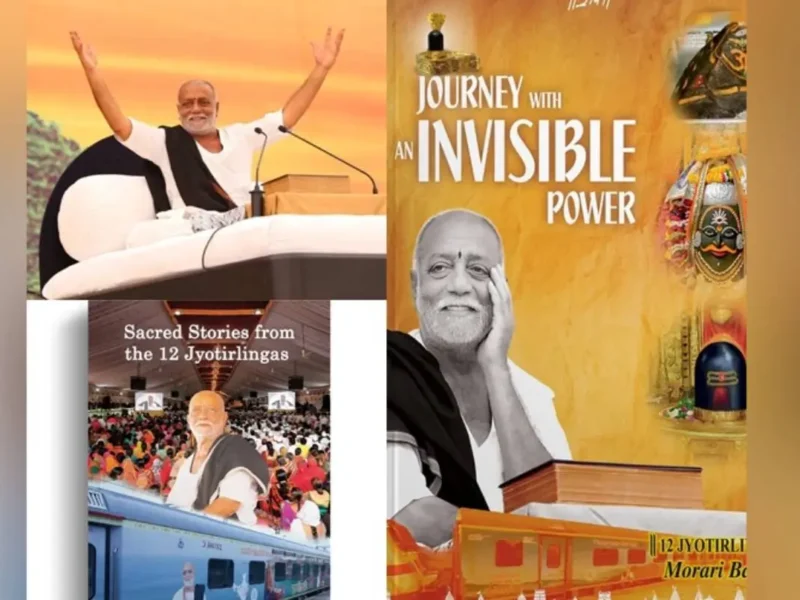Rushdie’s Look at Kashmir Pandits Is Evocative
By VIKAS DATTA
Winning a Booker Prize for his very second book, “Midnight’s Children” in 1981, Salman Rushdie, though, earned more attention, not to mention notoriety, with his fourth, “The Satanic Verses”, which drew the undying ire of Islamists — as the attack on him in the US revealed.
Rushdie, who had to go underground for nearly a decade under heavy security and remains quite controversial — as was evident from the row over his proposed video address at a prominent Indian literary festival a few years back — remains unbowed.
Like the equally intrepid author Taslima Nasreen, he has never shied away from attacking excesses, in the name of religion, politics, and ideology, especially when done by his own co-religionists.
“Midnight’s Children” too was not a very sympathetic look at India in its first few decades, as seen through the eyes of its singular protagonist who was born at the exact moment of the country’s freedom.
His next book, “Shame” did the same for Pakistan. Here, Rushdie used magic realism to fashion an account of the tussle between a civilian ruler and an army general, which would go on to shape the contours of the country and the region — and are still doing decades hence.
“The Moor’s Last Sigh”, his next work after “The Satanic Verses”, was again set in the subcontinent; his next two — “The Ground Beneath Her Feet” and “Fury” — had a global canvas, but Rushdie returned to his old stomping ground with “Shalimar the Clown”, which moves northwards to the troubled and turbulent paradise of Kashmir to produce another tour de force.
Rushdie got a taste of the Islamic radicalism sweeping the Valley when, in February 1989, months after ‘The Satanic Verses’ first appeared, riots erupted in Srinagar’s Fatah Kadal neighborhood, leading to police firing, causing the death of one person, and injuring more than 45 policemen and 75 protesters.
The protest took place a day after a similar eruption had led to the death of five people in Islamabad. A police contingent guarding a Hindu temple was the initial target of the mob, but it was not long before violence erupted across Srinagar. Both India and Pakistan had banned “The Satanic Verses”.
Rushdie had then said to “The Times” of London: “I am a writer trying to deal with real issues. I have not arranged any marches on embassies or arranged for any shots to be fired.” And he refused to accept the need to undertake cuts. “That is mob rule,” he said.
The plot of “Shalimar the Clown” is not easy to comprehend, given the complex background of most of its protagonists, but it still has a pithy, albeit harrowing, account, with some pointed metaphors, of one particularly painful part of the Kashmir issue’s fallouts — the violent targeting of the Kashmiri Pandit community, leading to their enforced en masse migration.
And then there was the matter of how the state failed them.
In all of this, there is a staccato strain, building slowly to a crescendo, as the reader will become aware.
As the account uncompromisingly brings out: “Hindu community houses, temples, private homes, and whole neighborhoods were being destroyed … Kill one, scare ten, the Muslim mobs chanted, and ten were, indeed, scared … Three hundred and fifty thousand Pandits, almost the entire Pandit population of Kashmir fled from their homes and headed south to the refugee camps where they would rot, till bitter fallen apple, like the unloved, undead dead they had become.”
It continues in the same vein: “In the so-called Bangladeshi markets in Iqbal Park-Hazuri Bagh area of Srinagar the things looted from temples and homes were being openly bought and sold … Three and a half lakhs of human beings arrived in Jammu as displaced persons and for many months the government did not provide shelters or relief or even register the names, why was that …
“The camps at Purkhoo, Muthi, Mishriwallah, Nagrota were built on the banks and beds of nullahs, dry seasonal waterways, and when the water came the camps were flooded, why was that … The pandits of Kashmir were left to rot in their slump camps, to rot while the army and the insurgency fought over the bloodied and broken valley, to dream of return, to die while dreaming of return, to die after the dream of return died so that they could not even die dreaming of it, why was that, why was that, why was that, why was that.”
No other piece can so succinctly and soulfully bring out the impact of an abstract fight over the sense of society and religion or faith on a group of people who had seen their past erased, their present disrupted, and their future — and that of their next generations — so utterly ruined, without hope of redemption.
That is why writers like Rushdie are invaluable.






raja
/
Kashmir was a tragedy because of fanaticism and terror and it is still not recovered. The Indian constitution cannot deal with this kind as terror is rearing its head with more impunity
August 26, 2022